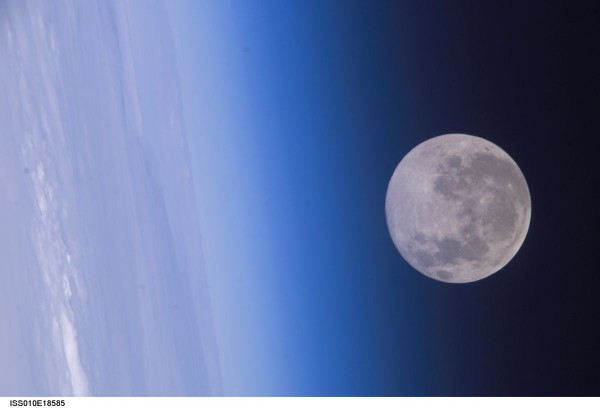By Ana Verayo, | January 15, 2017

The moon is about 4.51 billion years old. (NASA)
How long has the moon been shining on Earth? Astronomers from the University of California, Los Angeles, have determined how old is our moon, estimating it to be 140 million years older than first thought. This would mean that the moon may be as old as 4.51 billion years old.
Like Us on Facebook
The team studied a mineral from the moon called zircon which was obtained during the NASA Apollo 14 mission in 1971. Past theories had held that a protoplanet collision with Earth's sister planet called "Theia" resulted in a violent impact that formed the moon.
According to the lead author of the study, geochemist Mélanie Barboni of UCLA's Department of Earth, Planetary and Space Sciences, it has been very challenging to determine the moon's age since evidence or remnants of that violent impact have been erased.
By studying zircons with a mass spectrometer, the team gathered evidence for this study. According to the co-author of the study, Kevin McKeegan, who is a UCLA professor of geochemistry and cosmochemistry, zircons are natural clocks and this mineral can preserve geological history.
The infant moon was first covered in a global ocean of magma from this violent impact of Earth and Theia. Its surface then cooled and became its crust and mantle.
The team studied how uranium zircon decayed into lead and identified when this lunar magma formed. The team also studied lutetium zircons and how it decayed into hafnium.
According to the co-author of the study, Edward Young, who is also a UCLA professor of geochemistry and cosmochemistry, this was a very clever method to figure out the real age of the moon, by determining its pre-history before it solidified and not during its solidification.
The team is still in the process of studying these lunar zircons to gain more insight and clues about the origins of the moon.
This new study was published in the journal, Science Advances.
-
Use of Coronavirus Pandemic Drones Raises Privacy Concerns: Drones Spread Fear, Local Officials Say

-
Coronavirus Hampers The Delivery Of Lockheed Martin F-35 Stealth Fighters For 2020

-
Instagram Speeds Up Plans to Add Account Memorialization Feature Due to COVID-19 Deaths

-
NASA: Perseverance Plans to Bring 'Mars Rock' to Earth in 2031

-
600 Dead And 3,000 In The Hospital as Iranians Believed Drinking High-Concentrations of Alcohol Can Cure The Coronavirus

-
600 Dead And 3,000 In The Hospital as Iranians Believed Drinking High-Concentrations of Alcohol Can Cure The Coronavirus

-
COVID-19: Doctors, Nurses Use Virtual Reality to Learn New Skills in Treating Coronavirus Patients







